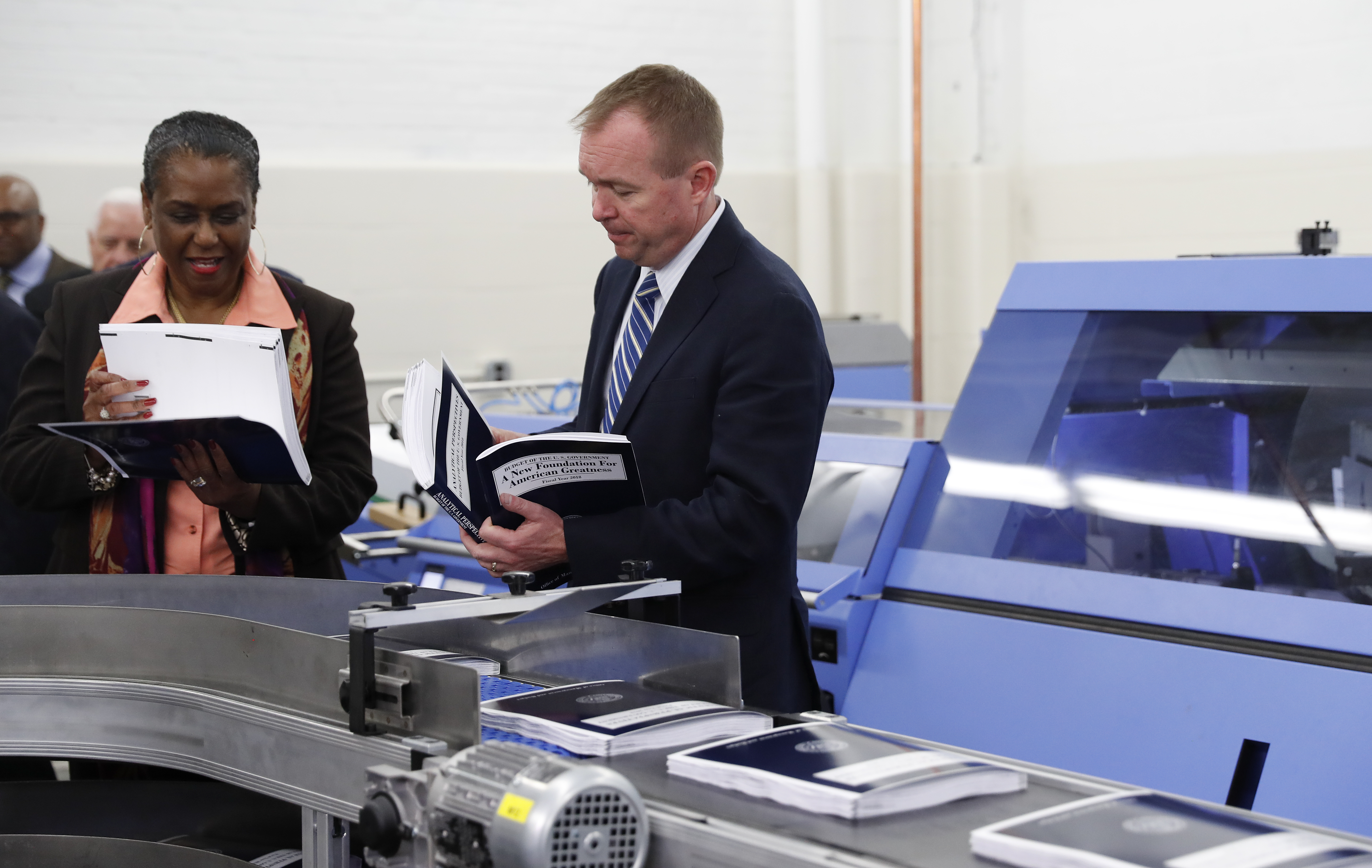
Can America be great and mean to its most vulnerable at the same time?
This is a philosophical question whose answer has changed over the course of this century. In the race to alleviate the suffering of the largest taxpayers, politicians have pledged to protect the most vulnerable. It would have been political suicide to do otherwise.
That is no longer the case; quite the opposite, actually.
This is a seismic political shift lost in the drama and theater of daily political news.
But President Donald Trump’s budget, to be officially unveiled today, is a statement of who we are. We are not who we once were.
The budget targets the very people who helped power Trump’s ascension to the White House: “economically strained voters,” the New York Times says.
Over the next decade, it calls for slashing more than $800 billion from Medicaid, the federal health program for the poor, while slicing $192 billion from nutritional assistance and $272 billion over all from welfare programs. And domestic programs outside of military and homeland security whose budgets are determined annually by Congress would also take a hit, their funding falling by $57 billion, or 10.6 percent.
The plan would cut by more than $72 billion the disability benefits upon which millions of Americans rely. It would eliminate loan programs that subsidize college education for the poor and those who take jobs in government or nonprofit organizations.
The unhealthy, the poor, the young crushed by student loan debt. These are today’s vulnerable.
Like most presidential budgets, this one is dead on arrival from a practical point of view; Congress will substitute its own approach. But it is a declaration of how an administration views the world and the future.
“Meals on Wheels, even for some of us who are considered to be fiscal hawks, may be a bridge too far,” said Rep. Mark Meadows, R-NC, and the chairman of the conservative House Freedom Caucus.
“The politics of this make no sense to me whatsoever, in the sense that the population that brought them to the dance are the populists out there in the Midwest and South who rely on these programs that he’s talking about reducing,” G. William Hoagland, a former senior Republican congressional budget aide, tells the Times.
“I’m deeply concerned about the severity of the domestic cuts,” Rep. Hal Rogers, R-Ky., a long-time member of the powerful House Appropriations Committee, told Politico.
Slate’s Jordan Weissmann says the budget blueprint gives House Speaker Paul Ryan “permission to cut away.”
Even if the whole package probably isn’t going to become a reality, it’s still a sign that he won’t stop Republicans enacting whatever rash part of their agenda they manage to legislate.
And while they may be more hesitant to pass dramatic cuts to some programs now that they’re actually in power and liable to suffer the electoral consequences — many come from farm states that tend to like food stamp spending, for instance — the GOP now has an empty suit in the oval office who’s apparently willing to bring their most extreme ideas to life. He might not even bother to read them first.
“They have not come down like we would expect them to do,” Trump’s budget director said of the 44 million Americans on food stamps. “That raises a very valid question: Are there folks on SNAP who shouldn’t be?”
It’s a valid question that should be answered before issuing a budget that assumes the answer is “yes.”
The Washington Post’s Wonkblog today could help.
Anti-hunger advocates argue that, generally speaking, there are not. Because SNAP benefits decrease gradually with increased income, there is no incentive for people to avoid work to get benefits — a phenomenon economists call the “welfare cliff.” And benefits are too small for people to subsist on them without working: The average food stamp benefit was $465 a month for a family of four in 2015. Most people are on the program for between seven and nine months on average.
“The notion that people would prefer not to work to get that benefit, give me a break,” said U.S. Representative Jim McGovern, (D-Mass.) a longtime anti-hunger advocate. “This is a lousy and rotten thing to do to poor people. They look at SNAP as an ATM to pay for their other priorities.”
Additionally, three quarters of households using SNAP contain children, seniors, or people with disabilities, said Elaine Waxman, a senior fellow in the Income and Benefits Policy Center at the Urban Institute. Without SNAP, the country would have had 3 to 4.5 million more people in poverty during the recession, she said.
More than a quarter of able-bodied adults without dependents on SNAP do not have a high school diploma, Waxman said; another 57 percent don’t have college degrees — putting them at a disadvantage when it comes to finding work.
A number are also veterans, young adults aging out of the foster care system, and felons recently released from jail. SNAP recipients who cannot find work, for these or other reasons, are supposed to attend job training programs — but they’re not widely available because of lack of funding.
“This is the trick. On the one hand, you want people to do something, when in fact a lot of folks may not realistically be able to find a job,” Waxman said. “Most states don’t want to put the money in. This is a dilemma that we’re in.”
The budget is a declaration of who we are and who we want to be. Maybe that’s the conversation we should start with. Who are we?
Related work: Staff report: Mpls. minimum wage should make no exception for tipped workers (Star Tribune)
